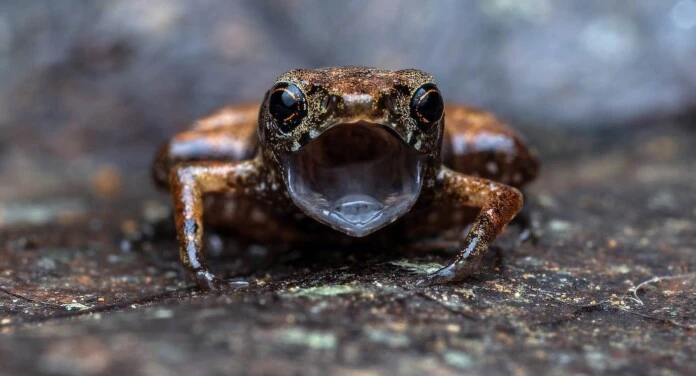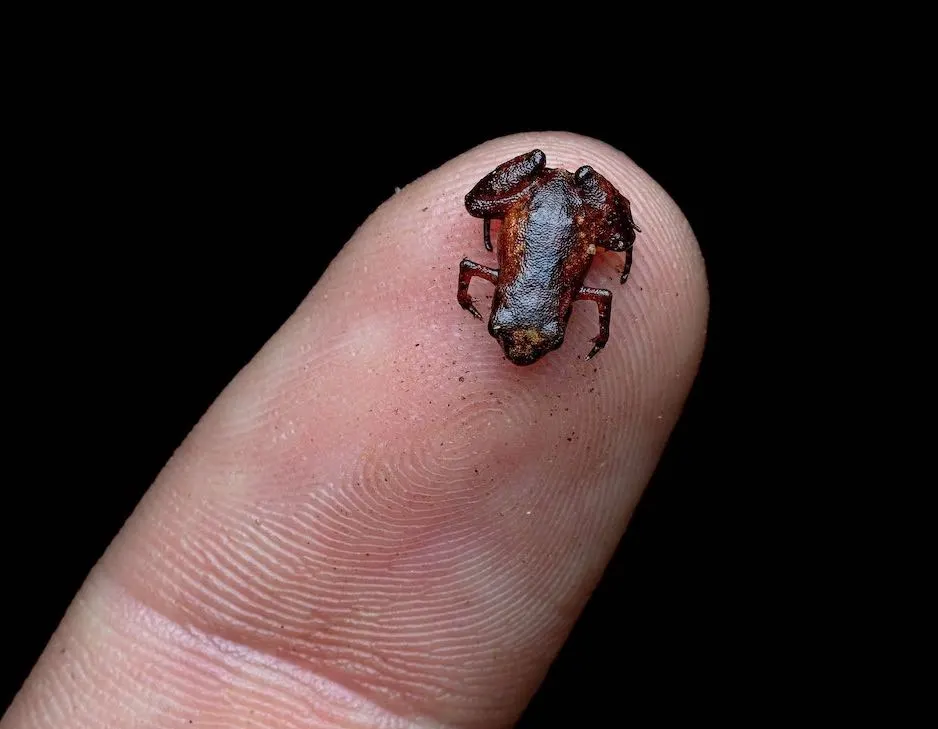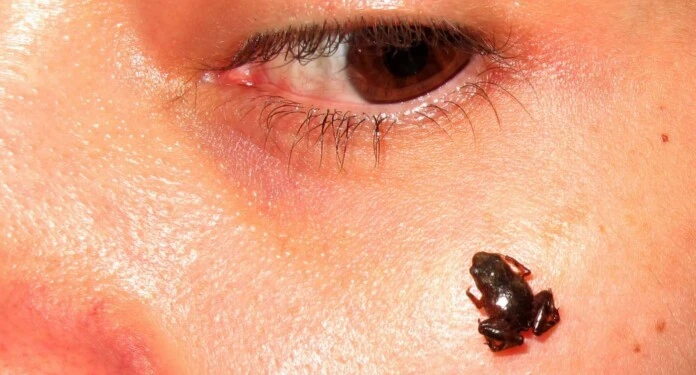A newly discovered tiny toad from a Brazilian rainforest has earned the title of the world’s second-smallest vertebrate.
Researchers have recorded the flea toad at slightly more than a quarter of an inch in length (6.95 millimeters), allowing it to comfortably perch on the tip of a finger. Remarkably, this species hatches from an egg as a fully formed toad instead of a tadpole.

Named B. dacnis, the new species honors Project Dacnis, a nonprofit organization dedicated to conservation, research, and education that protects private sections of the Atlantic Forest—a South American rainforest spanning the Atlantic coastline of Brazil, where this remarkable creature was discovered.
“There are small toads that share the typical traits of larger toads, except for their size,” explained Luís Felipe Toledo, the corresponding author of the study and a biology professor at the State University of Campinas (UNICAMP). “Yet, this particular genus is distinct. Throughout its evolutionary journey, it has undergone a process known as miniaturization, which involves the loss, reduction, and/or fusion of bones, alongside fewer digits and the absence of certain anatomical features.”

This marks the seventh species of flea toad identified within the genus Brachycephalus. The only vertebrate smaller than this toad belongs to a different species within the same genus, B. pulex.
While exploring the leaf litter, the researchers were drawn to the distinctive vocalizations of the species. DNA analysis confirmed that the toad discovered in Ubatuba, located on the coast of São Paulo state, was indeed a new species. Toledo noted that historical DNA sequencing from zoological museums and herbarium samples helped eliminate any doubts. The researchers included details about the toad’s anatomical features, skeleton, internal organs, molecular data, and vocalizations in their species description.
“The diversity of these tiny frogs may be more extensive than we currently realize, underscoring the necessity of documenting as many traits and characteristics as possible. This will help expedite the description process and enable us to focus on conservation efforts promptly,” Toledo remarked.
